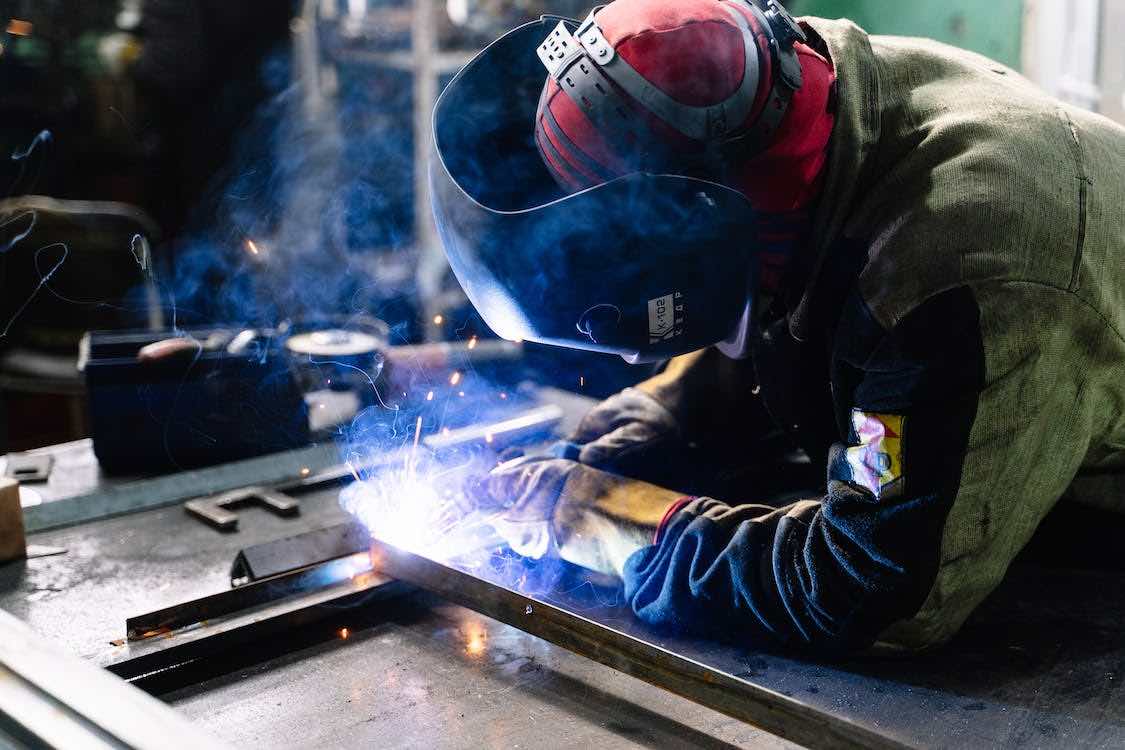Steel-framed homes are modern construction structures that have steel as the primary material for the load-bearing framework, but they come with drawbacks such as thermal inefficiency, corrosion, and fire issues. This framework acts as the skeleton of the building, providing support and stability to the overall structure.
Steel frames account for 70% of all non-domestic framed multi-storey UK construction. They first gained popularity due to their strength, durability, and rapid assembly, but they may come with some hidden complications. This guide aims to explain the mortgage process, drawbacks, and advantages of steel frame homes.
What Are the Advantages of Steel-Framed Homes?
Steel-framed homes offer several advantages over conventional construction methods. The strength of steel allows for larger open spaces, providing architects and designers with more flexibility in creating innovative and spacious designs.
Steel’s durability makes these homes resistant to pests, such as termites, and immune to rot, common issues with timber-framed structures. On top of that, steel is a recyclable material, making steel-framed homes more environmentally friendly.
Are There Lenders That Will Offer a Mortgage for a House With a Steel Frame?
Yes, there are lenders that offer mortgages for houses with a steel frame. However, not all lenders may be willing to finance non-standard properties, and the availability of mortgage options for steel-framed homes may vary between lenders.
Working with a mortgage broker can also be helpful, as they have access to multiple lenders and can assist in finding suitable mortgage options tailored to your specific circumstances. Request a quote with Deedle and we can connect you with a lender regardless of your circumstances.
Will I Need a Higher Deposit for a Steel Frame Home?
Yes, you may need a higher deposit when purchasing a steel-framed home compared to a property built with traditional materials like bricks and mortar. Lenders typically assess mortgage applications based on the level of risk they are exposed to, and steel-framed homes are often considered non-standard properties, which can carry higher perceived risks.
Since steel-framed homes are constructed using different materials and techniques, some lenders may view them as less conventional and potentially harder to sell in the event of default or repossession. To balance out this perceived risk, lenders may require a larger deposit from borrowers looking to finance a steel-framed property.
What Is the Issue With Steel-Framed Homes?
Thermal performance is a significant issue with steel-framed homes due to the high thermal conductivity of steel. During cold weather, steel easily conducts heat, resulting in rapid heat loss from the building interior.
Because of this, the interior of the house can feel colder, leading to higher energy consumption to maintain comfortable temperatures. Inefficient thermal performance can lead to increased heating costs, which might be particularly problematic during winter.
Are Steel-Framed Homes More Prone to Fire Hazards?
Not inherently, but they often can be. While steel itself is not combustible and does not contribute to the spread of flames, steel-framed homes may face fire safety issues if not constructed with proper fire-resistant materials and techniques.
During a fire, steel can lose its strength when exposed to high temperatures, potentially leading to structural failure or collapse. Fire-rated insulation, intumescent coatings, and fire barriers are essential components in improving the fire resistance of steel-framed homes.
How Can Fire Resistance Be Improved in Steel-Framed Homes?
To enhance fire resistance in steel-framed homes, builders must use fire-rated insulation materials, which help delay the transfer of heat to the steel frame. Intumescent coatings, which expand when exposed to heat, can provide additional protection.
Incorporating fire barriers such as fire-resistant gypsum boards or spray coatings can also slow down the spread of fire within the building. Installing a fire alarm and sprinkler system can help contain fires and provide occupants with sufficient time to evacuate safely.

Is Corrosion a Problem in Steel-Framed Homes?
Yes, corrosion is a concern, particularly in coastal areas with higher salt exposure, where steel-framed homes may be more susceptible to rust and deterioration. If steel is not adequately protected with suitable coatings and regular maintenance is neglected, it can corrode over time.
Corrosion compromises the structural integrity of the building, leading to safety risks and expensive repairs. This is one of the reasons that insurers may be wary about steel frame homes.
How Can Corrosion Be Prevented in Steel-Framed Homes?
To combat corrosion, builders should use corrosion-resistant steel or apply protective coatings, such as zinc or epoxy coatings, which act as barriers against moisture and other corrosive elements. Regular inspections and maintenance are crucial to detecting and addressing any signs of corrosion promptly. Proper drainage systems and vapour barriers can also help prevent moisture infiltration, reducing the risk of corrosion.
Are Steel-Framed Homes More Prone to Condensation Issues?
Yes, steel-framed homes can be more susceptible to condensation problems. Steel’s high thermal conductivity means that moisture in the air can condense on the colder steel surfaces, leading to potential dampness and mould growth. Condensation issues can negatively impact indoor air quality and the structural integrity of the building over time.
Managing condensation in steel-framed homes requires a combination of proper ventilation and insulation. Adequate insulation reduces the temperature differential between indoor and outdoor surfaces, minimising the chances of condensation. Proper ventilation helps control humidity levels inside the building, preventing moisture buildup and reducing the risk of condensation-related problems.
Are There Any Specific Building Regulations for Steel-Framed Homes in the UK?
No. In the UK, steel-framed homes are subject to the same building regulations and safety standards as any other type of construction. These regulations ensure that buildings meet specific safety, structural integrity, and energy efficiency standards.
Can I Retrofit My Existing Steel-Framed Home to Fix These Issues?
Yes, it is possible to retrofit existing steel-framed homes to improve thermal performance, fire resistance, and corrosion protection. However, retrofitting is complicated and expensive. You should work closely with qualified professionals.

Should I Avoid Steel-Framed Homes?
Not necessarily. It depends on your needs. While steel-framed homes have their challenges, they can still be a viable and durable construction option when built and maintained properly.
Many of the problems associated with steel-framed homes can be mitigated through careful planning, appropriate material selection, and proper construction techniques. There are plenty of advantages to steel framed homes, and it is up to you to determine whether they might suit your needs.
Concluding Thoughts
A concern for potential homeowners is the possibility of needing a higher deposit when purchasing a steel-framed property. Some lenders may view these homes as non-standard properties, which can lead to them asking for a larger deposit to mitigate these risks.
The construction of a steel-framed home can impact its resale value and marketability, as not all buyers may be familiar or comfortable with this type of construction. The maintenance costs associated with treating steel components to prevent corrosion can also be a significant consideration for both lenders and homeowners.
However, steel-framed homes offer several advantages including strength, durability, and resistance to pests and decay. There are lenders willing to offer mortgages for steel-framed homes, and Deedle can help you to find them.

